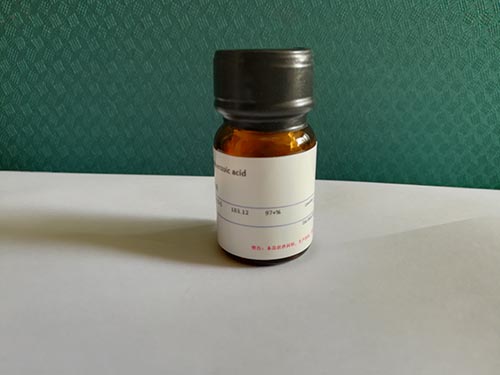Shrimp-derived component nucleic acid detection kit (one-tube PCR-fluorescent probe method) instruction manual
â—† Product Description
The allergen identification reagent in the species identification series can amplify a specific nucleic acid fragment of an allergen component in a food, and judge the result by a real-time amplification curve. This product is used for the detection of allergen shrimp components in foods and their raw materials. It can simultaneously detect shrimp and Arctic shrimp in one reaction with a detection limit of 0.01% . (Note: FAM channel detection primers are shrimp detection primers, non-specific amplification of sea crab, shrimp/crab climbing, tiger head crab, and red crab. VIC channel is the detection primer for Arctic shrimp.)
â—† Product composition (96 test)
021132LII | |
Reagent | content |
A-shrimp source-P | 20μL × 8 tubes × 12 rows |
NG-P | 100μL × 3 |
PG-Shrimp Source-P | 100μL × 2 |
- Applicable instrument
Real-time fluorescence PCR instrument such as ABI 7500, CFX 96, Mx 3005P, LineGene9600. (Quantitative PCR instrument for detecting both FAM channel (494 nm) and VIC channel (538 nm) channels).
â—† Self-supplied supplies and instruments
1 ice box; 2 pipettes (0.5-10μL, 10-100μL, 100-1000μL) and matching sterilization tips; 3 centrifuges; 4 vortex mixer; 5 metal bath.
â—† Notes
1. This reagent has high detection sensitivity. In order to prevent pollution, the experiment is to be partitioned.
1) First zone: sample preparation zone.
2) The second zone: the template addition zone.
3) Zone 3: Amplification and product analysis zone.
★ It is best to physically isolate the partitions to avoid contamination caused by human factors.
2. Work clothes and latex gloves are worn during the experiment, and tools are used independently in different areas. Gloves and lab coats need to be replaced.
3. Strictly follow the operation steps, reagent preparation and sample loading steps, please operate in strict accordance with the instructions on the ice box.
4. The components in the reaction solution are sensitive to light and should be stored away from light . The reagent should be completely thawed before use, but repeated freezing and thawing should be avoided. It is recommended to centrifuge for 30 seconds before use, and store the reaction solution in an appropriate volume according to the frequency of detection.
5. After the reaction is completed, the expansion tube should be placed in a sealed bag and discarded. On the same day, the lid is opened and the aerosol is easily contaminated. It is forbidden to open the lid.
6. Do not mix different batches of reagents used within the validity period.
â—† Sample processing
Refer to "SN/T 1961.10-2013 Export Food Allergen Ingredients Part 10: Real-time Fluorescence PCR Method for Detection of Shrimp/Crab Ingredients" or other standard processing samples, and prepare samples for use.
The collection and preparation of samples is an important step in the identification of allergen components. Measures to prevent cross-contamination are carried out in accordance with the provisions of GB/T 27403.
For detailed steps, please follow the standard operation or check the food safety software.
â—† Experimental operation
1. Template preparation (sample preparation area)
It is recommended to use the supporting animal genomic DNA extraction kit. The specific process is detailed in the product manual.
2. Add a template (template addition area, placed on the ice box)
Cut the PCR tube containing the reaction number, and place it at room temperature to be thawed. After centrifugation for 30 seconds, uncover the sealing film. Add 5 μL of template to each reaction solution in the order of NG, sample template to be tested. , PG-shrimp source-P. After the matching PCR tube cap was covered, the mixture was vortexed for 30 s, centrifuged for 1 min, and the PCR amplification reaction was immediately performed.
3. Amplification reaction (amplification and product analysis area)
A fluorescence quantitative PCR machine was used using FAM and VIC channels.
Set up the amplification reaction according to the following conditions:
PCR cycle | Fluorescence collection site | ||
95 ° C | 30 seconds | 1 cycle | - |
95 ° C | 15 seconds | 45 cycles | - |
60 ° C | 40 seconds | ※ | |
4. Baseline and threshold settings
The baseline adjustment takes 3-15 cycles of fluorescence signal, and the threshold setting principle is adjusted according to the instrument noise condition, so that the threshold line just exceeds the highest point of the normal negative control amplification curve (no-regular noise line), and the Ct value does not appear. Any value shall prevail.
â—† Result judgment
At the same time, the results of negative, positive and blank control experiments were normal. There was no fluorescence increase in the FAM and VIC channels of the test samples, and no allergen shrimp components were detected in the samples.
At the same time, the negative, positive and blank control experiments were normal, and the test samples had obvious fluorescence amplification curves, and the Ct value was ≤35. The sensitized shrimp components were detected in the samples.
The results of the negative, positive and blank control experiments performed at the same time are normal. If the Ct value of the fluorescence amplification curve of the test sample is between 35-40, the real-time fluorescent PCR reaction should be performed again. After the re-amplification, the Ct value is still between 35-40. It can be judged that the allergen shrimp component is detected in the sample, otherwise it can be judged that the allergen shrimp component is not detected in the sample.
One of the FAM and VIC channels is positive, and it can be judged that the allergen shrimp component is detected in the sample.
- The NG reaction is a smooth straight line, and the PG reaction is an "S" type amplification curve. The test result is valid, otherwise it is invalid. If the duplicate test results are still invalid, please contact technical support.

Prostate Treatment Machine
Prostate Treatment Machine is the most advanced health care device of the rostate gland in the world today. This product starts the new technologic era in the health care of the prostate gland. It combines far infrared ray, electronic pulse, magnet therapy and thermotherapy to improve the whole environment of the pelvic cavity in order to increase blood circulation of overall pelvic cavity.
It allows increase blood flow into the weakened tissue for enhance ecovery and pain relief. The special care to the most important accupoint [Huiyin" of prostate gland and pelvic cavity plays a very important role in the device, this helps to improve the total conditions of the procreation system. Meanwhile, this device also has obvious effects upon female pelvic cavity. Also it can help to prevent the disease of rectum.


Health Care Device,Prostate Treatment Machine,Prostate Gland Therapy,Prostate Gland Therapy Device
Shenzhen Guangyang Zhongkang Technology Co., Ltd. , https://www.szlighttherapymachine.com